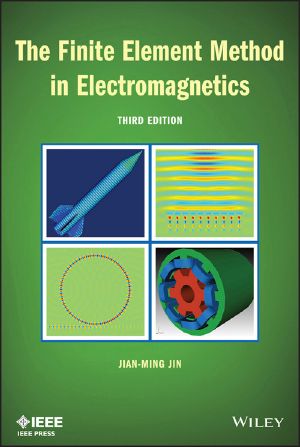The Finite Element Method in Electromagnetics

- Authors
- Jin, Jianming
- Publisher
- Wiley-IEEE Press
- Date
- 1993-02-28T00:00:00+00:00
- Size
- 35.29 MB
- Lang
- en
While the finite element method has been used to analyze electromagnetic problems for nearly three decades, practicing engineers have been without a comprehensive reference that could provide guidance on its application to the full range of problems they will confront in the course of their work, including those in the area of electromagnetic scattering and radiation. Jianming Jin's new book answers the need for such thorough, one-stop coverage, offering engineers a methodical way to quickly master this very powerful technique for solving practical, often complicated engineering problems. The Finite Element Method in Electronmagnetics provides the first systematic treatment of this numerical analysis technique for electromagnetics, including a brief review of the two classic methods - the Ritz variational method and Galerkin's method - which form the foundation of the finite element method. The book employs an example to introduce the concept of the finite element method and describes the essential steps of the technique without reference to any specific problem, laying the groundwork for a broad-based understanding of the finite element method's usefulness. The book goes on to describe the finite element analysis of one-,two-, and three-dimensional problems. For each class of problems, a rigorous finite element solution is developed in general form, from which the solution to specific problems can be deduced. In presenting these problems in this unique way, engineers clearly see that the method developed can be applied to a variety of different problems, rather than just to specific ones. The Finite Element Method in Electromagnetics is also the only book of its kind to discuss:. The latest recent developments of the finite element method in electromagnetics - included is coverage of finite element-absorbing boundary condition methods, finite element-boundary integral methods, and finite element-eigenfunction expansion methods. In dealing with these hybrid met